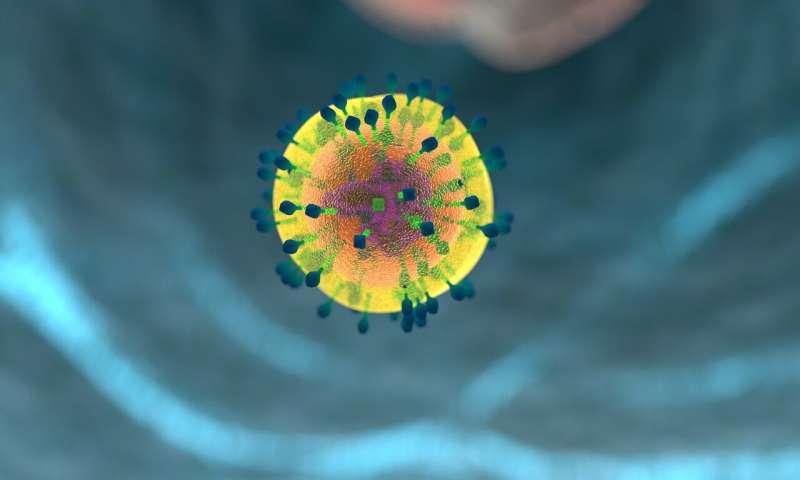Researchers discover key mechanism of cytokine storm in Castleman disease

When Castleman Disease patients have a flare of their symptoms, they experience a cytokine storm inside their bodies—a hyper-response from the immune system that can cause a fever, organ failure, and even death. Now researchers at the Perelman School of Medicine at the University of Pennsylvania say they know what's happening at the cellular level of the immune system when these cytokine storms occur, and the answer not only informs future potential Castleman therapies but may also provide new insight into why similar events take place in COVID-19 patients. The researchers published their findings today in the Journal of Clinical Investigation Insight. Castleman Disease isn't actually a single disease.
The term describes a group of inflammatory disorders that share a common appearance under the microscope. It's diagnosed in about 5,000 people of all ages each year in the United States, which makes it roughly as common as Lou Gehrig's disease, also called Amyotrophic Lateral Sclerosis or ALS. Patients experience a range of symptoms—from a single abnormal lymph node with mild flu-like symptoms to abnormal lymph nodes located throughout their entire body, abnormal blood cell counts, and life-threatening failure of multiple organ systems, such as the kidneys, liver, heart, and lungs. The most severe subtype, idiopathic multicentric Castleman disease (iMCD), has similarities to autoimmune conditions, viral illnesses, and cancer. About 35 percent of patients with iMCD will die within five years of diagnosis.
"With iMCD, just as with COVID-19, it is the body's hyper-response that's deadly rather than the disease itself, and this study gives us new clues about why the immune cells are out of control and what we can do to rein them in," said the study's senior author David C. Fajgenbaum, MD, MBA, MSc, an assistant professor of Translational Medicine and Human Genetics, director of the Center for Study & Treatment of Lymphadenopathies & Cytokine Storms, executive director of the Castleman Disease Collaborative Network (CDCN), and a Castleman patient himself.
For this study, researchers took blood samples from iMCD patients who were asymptomatic and from those who were in flare to examine the differences in their immune cells. Previous research has shown the cytokine storm is tied to a cytokine, or inflammatory mediator, called interleukin-6 (IL-6), which in turn is connected to another pathway called mTOR. This study advanced these findings further and discovered a particular group of cytokines called Type-I Interferons are highly active when patients are in flare. They also found that another pathway called JAK seems to be a critical mediator of the cytokine storm.
"This deeper understanding of exactly what's causing the immune system's hyper-response strengthens the link between mTOR activation and cytokine storms, suggesting new treatment approaches for the patients in flare," said the study's lead author Ruth-Anne Langan Pai, a Ph.D. candidate in Immunology and a member of the CDCN. Langan Pai performed the work as her doctoral thesis in Fajgenbaum's lab.
This alternative approach could address a vital clinical need. In 2014, the U.S Food and Drug Administration approved the drug siltuximab to treat iMCD, and studies have shown it can send between one-third and one-half of patients into a remission that generally lasts for years. However, patients who don't respond have limited options. They typically receive chemotherapy but often relapse.
Fajgenbaum and his team are currently testing treatment with mTOR inhibitors in a clinical trial (NCT03933904) at the University of Pennsylvania, with Sunita Nasta, MD, FACP, an associate professor of Hematology-Oncology, and Adam Cohen, MD, an assistant professor of Hematology-Oncology, enrolling and treating patients.
Fajgenbaum also says he hopes this work will prompt others in the field to consider different ways to approach the cytokine storms COVID-19 patients are experiencing. A provisional patent has been filed for a new treatment approach involving inhibition of JAK based on this work.




















